If President-elect Bola Tinubu retains fuel subsidies, his administration will spend an estimated N14.01 trillion within the next four years, which might hurt Nigeria’s fiscal outlook.
On May 29, 2023, Bola Tinubu will be sworn in as Nigeria’s 6th democratically elected president following his victory in the contentious February 25 general election.
From all indications, the incoming president has a lot of work cut out for him in different areas, with critical decisions needed to be made on all fronts.
Among the many decisions Nigerians are looking forward to seeing the Tinubu administration make is the removal of fuel subsidies, an issue that has lingered over the years in Nigeria.
Subsidy, as noted by Dataphyte, is the sum of money granted by the government or a public body to assist an industry or business so that the price of a commodity or service may remain low or competitive. The aim of this is simply to make essential commodities available to the average citizen.
According to a research brief by the International Centre for Tax and Development, subsidies were first introduced in Nigeria in the 1970s as a response to the oil price shock in 1973.
In particular, fuel subsidies became a thing in Nigeria in 1977 as a temporary fiscal response to an oil price spike experienced in that period (the 1970s). What was intended as a temporary measure then has, however, persisted to date.
But since 1999, there have been various debates as to whether the government should continue or discontinue fuel subsidies.
Experts at various levels have expressed their views on this. The International Monetary Fund (IMF), the World Bank, and others have advised the government to remove petrol subsidies.
The World Bank argued that fuel subsidies benefitted primarily wealthy households. This was also corroborated in one of Dataphyte’s data dives.
All the concerns put together, plus the huge amounts of money spent so far on fuel subsidies over the years, have led to the argument for fuel subsidy removal.

Between 2000 and 2022, there were six major attempts by different governments to remove subsidies, but all were met with protests and resistance, which made the removal of subsidies impossible.
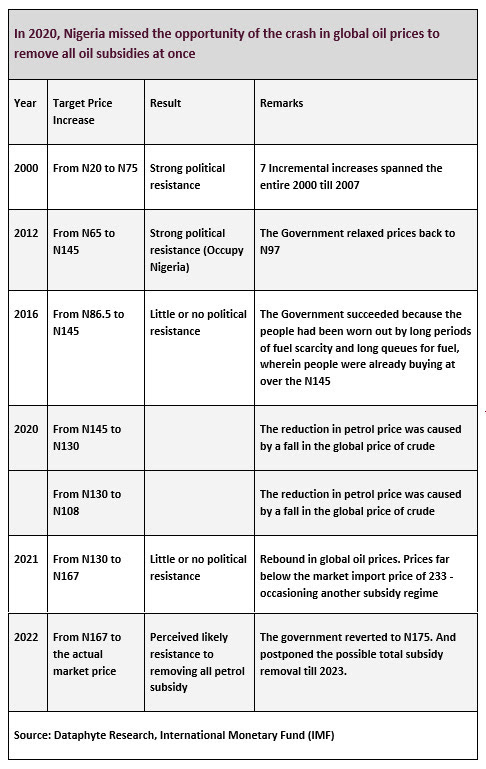
However, Bola Tinubu has promised to remove fuel subsidies no matter the level of resistance from the public.
“…No matter how long you protest, we are going to remove subsidy,” Tinubu said during a business luncheon he had with business owners in 2022 in Lagos State.
His intention to remove fuel subsidy is also spelt out in his policy document. “We shall phase out the fuel subsidy yet maintain the underlying social contract between government and the people. We do this by dedicating the money that would have been used on the subsidy to fund targeted infrastructural, agricultural and social welfare programs ranging from road construction, to boreholes, public transportation subsidies, education and healthcare funding programs. In this way, the funds are more directly and better utilised to address urgent social and economic needs,” part of the policy document on page 37 reads.
There are concerns that the removal of fuel subsidies may not happen – at least not in the immediate – as the Nigerian Labour Congress (NLC) has vowed to resist such a move on the ground that the country’s refineries must be functional before the subsidy could be removed.
Given the NLC’s stance over the years and protests in the past against the removal of fuel subsidies, it is therefore not clear if the incoming administration will go on with the plan to remove fuel subsidies. Though Tinubu had vowed to remove fuel subsidies, he may be forced to hold on to it for political expediency or social reasons.
Using available data, we examined different scenarios, possible options the government may go, and how much it will cost if Tinubu retains the much-debated fuel subsidies.
According to the data from Nigeria Extractive Industries Transparency Initiative (NEITI) and the Nigerian National Petroleum Corporation Limited (NNPCL), subsidy payments between 2015 and July 2022 gulped N6.99 trillion.
Particularly from 2020, there was an annual increase in the amount spent by the government on fuel subsidies payment, reaching an all-time high in July 2022.
Between January and July 2022, data showed that the government spent N2.04 trillion on subsidies payment.
For the remaining months (i.e. August to December), data haven’t been published as of the time of this publication. Thus, we used the average amount spent from January to July 2022 to estimate for other months. This brought the estimated amount for fuel subsidy for the whole of 2022 to N3.5 trillion. This shall therefore form our baseline for estimates for other years.
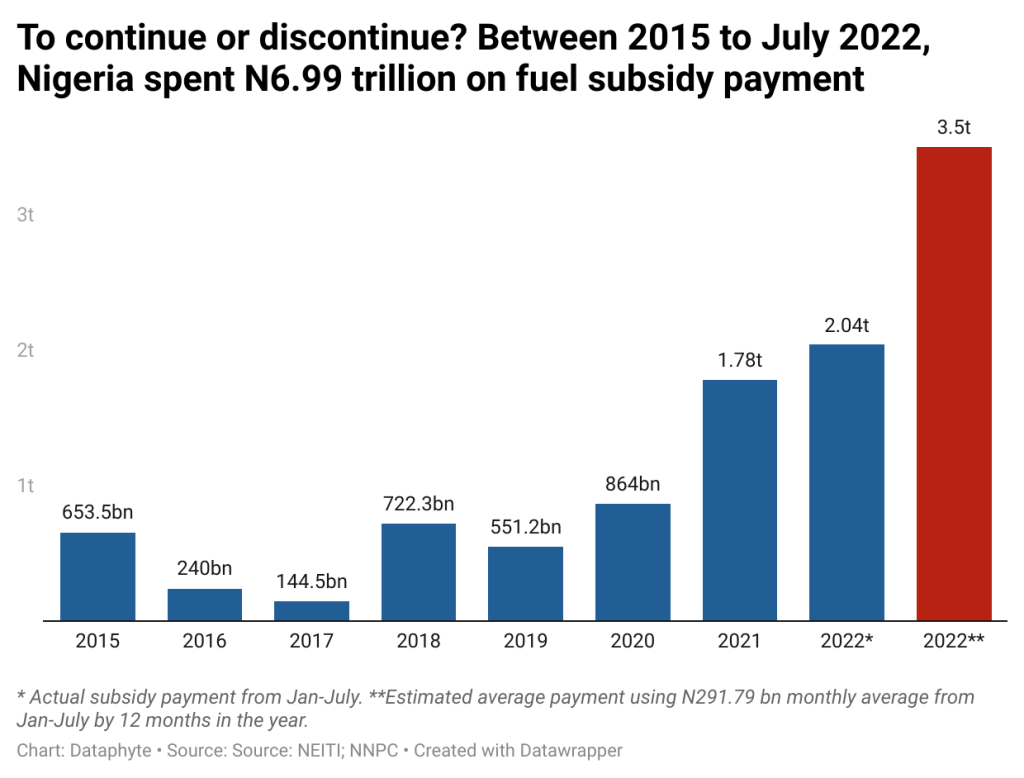
Using this baseline (N3.5 trillion), without factoring in inflation, exchange rate and change in crude oil prices, if the Tinubu administration decides to retain fuel subsidy at 100 percent, subsidy payment is estimated to cost the country the sum of N3.5 trillion annually.
If the Tinubu government then decides to retain it for the first four years of its administration, subsidy payment is estimated to gulp 14.01 trillion.
Using the same baseline, we examined the cost of payment of subsidy if the incoming administration retains it at 75 percent. From our analysis, the country may spend N2.63 trillion annually and N10.5 trillion in four years (if the subsidy is retained at 75 percent).
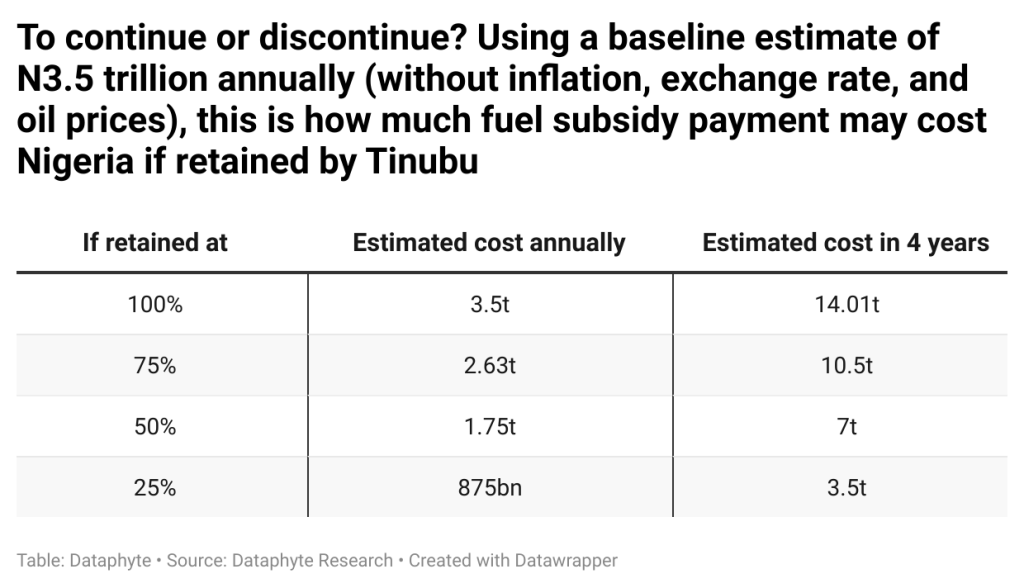
Other scenarios examined were the amount the subsidy would be should Tinubu retain it at 50 percent or 25 percent. At 50 percent, fuel subsidy payment will gulp N1.75 trillion annually, amounting to N7 trillion in four years.
At a 25 percent scenario, it’s estimated to cost N875 billion annually and N3.5 trillion in four years.
Except for total removal, whatever option the incoming government decides to go with, data showed that spending on fuel subsidies would gulp a significant portion of the country’s revenue as it had done in the past.
For instance, between 2010 and 2021, Nigeria spent 23 percent of its revenue on oil subsidies, according to a previous report by Dataphyte.
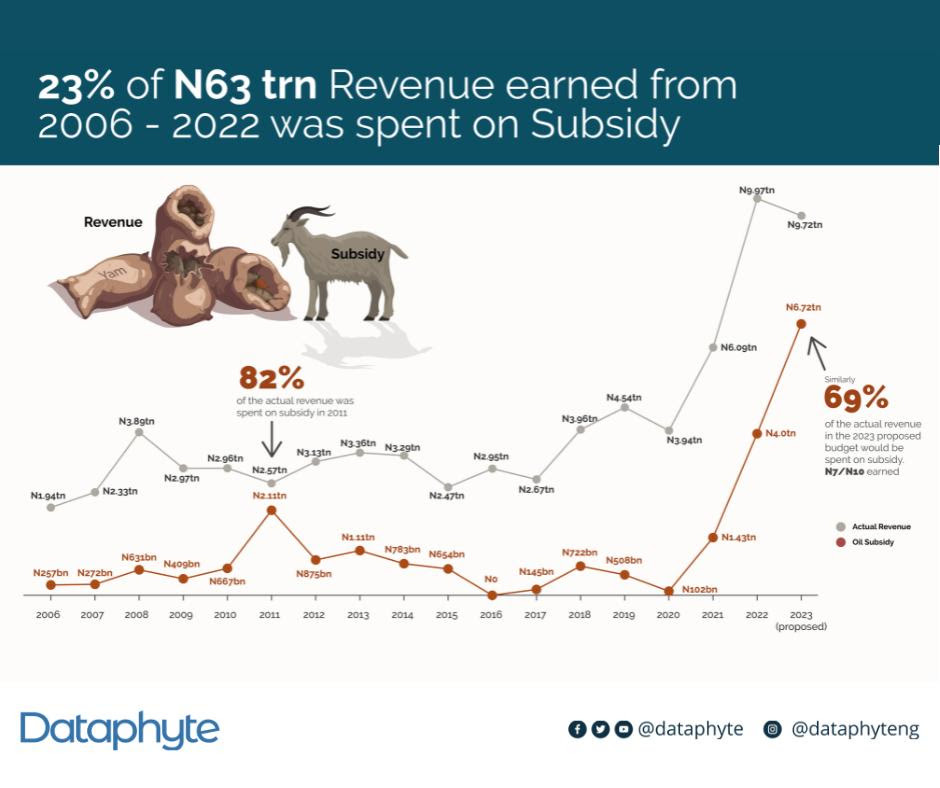
With the government’s projected revenue for each year, as noted in the Nigerian Medium Term Expenditure Framework (MTEF) document, we also examined the share of revenue taken by the subsidy payment in different scenarios. This is with the assumption that the government would meet its projected revenue for each of the years.
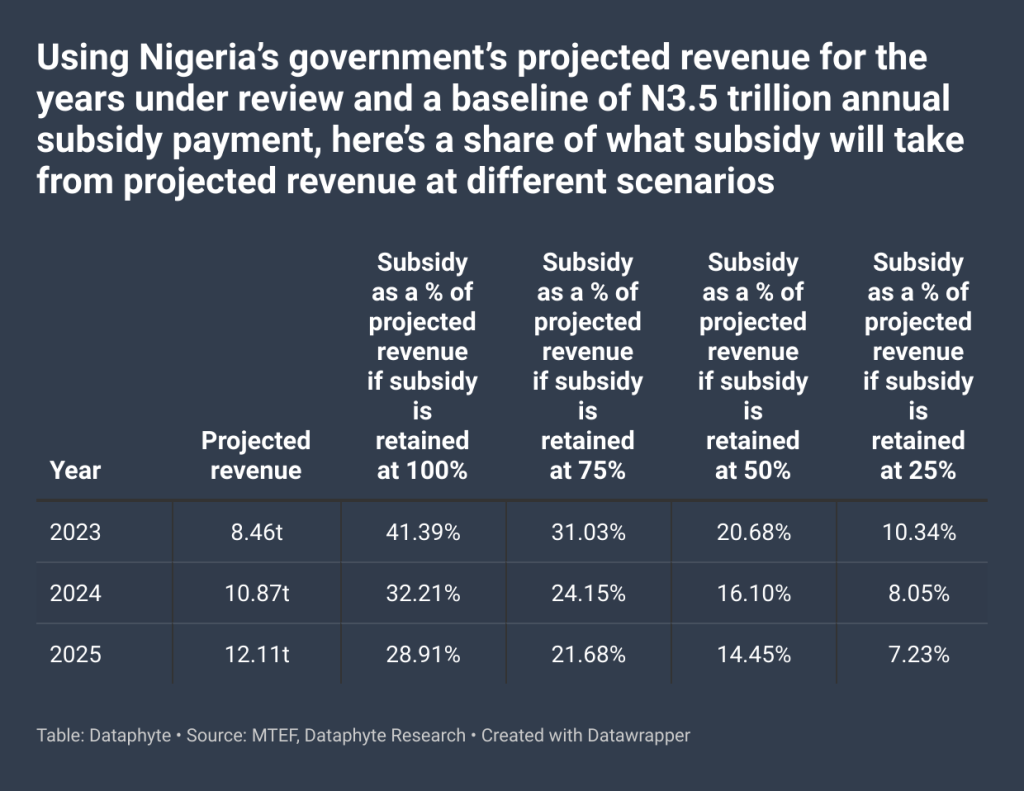
This is, however, unlikely as data showed that the government had always fallen short of its revenue targets. Hence fuel subsidy payment at 100 percent will take 41.39 percent of the government revenue in 2023, 32.21 percent of revenue in 2024 and 28.91 percent of revenue in 2025.
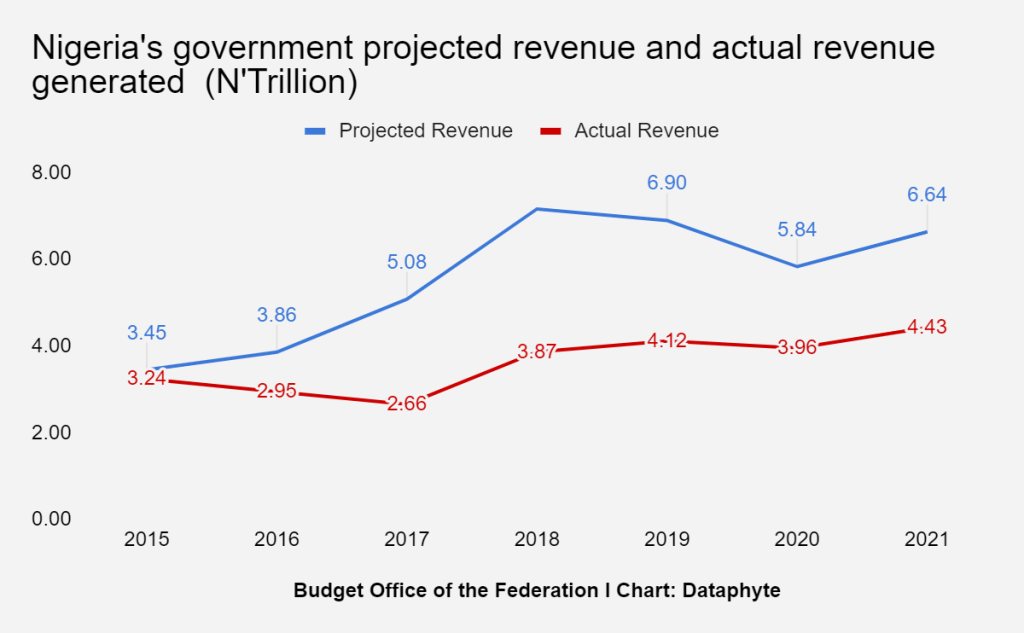
Thus, while subsidy will gulp a huge amount of the country’s resources if it is retained at any percentage, it will further mean that the government will continue to borrow to fund petrol subsidies.
Recall that last year, the Minister of Finance, Budget and National Planning, Ms Zainab Ahmed, had stated that the Federal Government was borrowing money to fund petrol subsidies -a situation she explained had become totally unsustainable.
A Professor of Economics, Uche Nwogwugwu, described petrol subsidies as a scam.
He said the amount being spent on the petrol subsidy could fund local refineries, noting that Nigeria should have removed subsidy in 2012 when former President Goodluck Jonathan had proposed it.
“Why would you be talking about spending trillions of naira on petrol subsidies when education, infrastructure and security are suffering? These are sectors you can feel their impact immediately, not petrol subsidies that even have no bearing on the poor. It is simply a waste of money.”
A former CBN Assistant Director and Senior Lecturer at Covenant University, Professor Jonathan Aremu, said subsidies often distorted the market, making it hard for products to find their real value.
He, however, urged the next government to provide incentives that would alleviate the sufferings of Nigerians should it decide to remove the petrol subsidies.

.webp)







